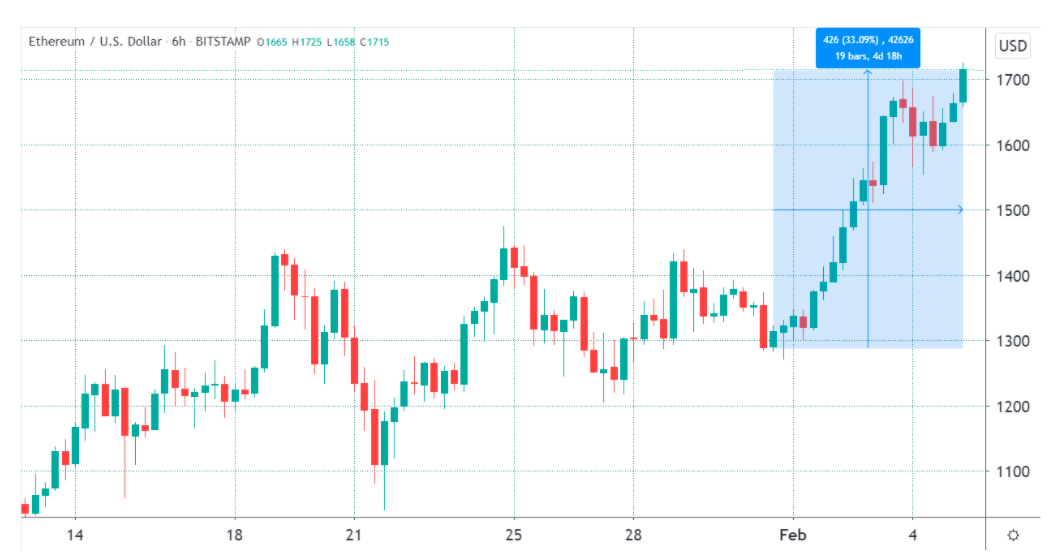Ether (ETH) price has rallied by 33% over the last five days and data shows that as this occurred some buyers began to use excessive leverage.
Although this is not necessarily negative, it should be considered a yellow flag as a higher premium on futures contracts for short periods is normal.

Although Ether’s upward movement has been going for an extended period, it was only in February that Ether finally broke the $1,500 psychological barrier and entered price discovery mode.
To assess whether the market is overly optimistic, there are a few essential derivatives metrics to review. One is the futures premium (also known as basis), and it measures the price gap between futures contract prices and the regular spot market.
The 3-month futures should usually trade with a 6% to 20% annualized premium, which should be interpreted as a lending rate. By postponing settlement, sellers demand a higher price and this creates a price difference.

The above chart shows the Ether futures premium shooting above 5.5%, which is usually unsustainable. Considering there’s less than 49 days to the Mar. 26 expiry this rate is equivalent to a 55% annualized basis.
A sustainable basis above 20% signals excessive leverage from buyers and creating the potential for massive liquidations and market crashes.
A similar movement happened on Jan. 19 as Ether broke $1,400 but failed to sustain such a level. That situation helped trigger the liquidations that followed and Ether plunged 27% over the next two days.
A basis level above 20% is not necessarily a pre-crash alert but it reflects high levels of leverage usage from futures contract buyers. This overconfidence from buyers only poses a greater risk if the market recedes below $1,450. That was the price level when the indicator broke 30% and reached alarming levels.
It is also worth noting that traders sometimes pump up their use of leverage in the midst of a rally but also purchase the underlying asset (Ether) to adjust the risk.
Sellers were not liquidated by the move to $1,750
Those betting on $2,000 Ether should be pleased to know that open interest has been increasing all throughout the recent 33% rally. This situation indicates short-sellers are likely fully hedged, taking benefit of the futures premium, instead of effectively expecting a downside.

This week the open interest on Ether futures reached a record $6.5 billion, which is a 128% monthly increase.
Professional investors using the strategy described above are essentially doing cash and carry trades which consist of buying the underlying asset and simultaneously selling futures contracts.
These arbitrage positions usually do not present liquidation risks. Therefore, the current surge in open interest during a strong rally is a positive indicator.
The views and opinions expressed here are solely those of the author and do not necessarily reflect the views of Cointelegraph. Every investment and trading move involves risk. You should conduct your own research when making a decision.

